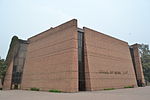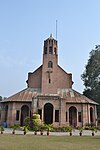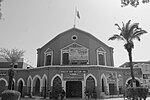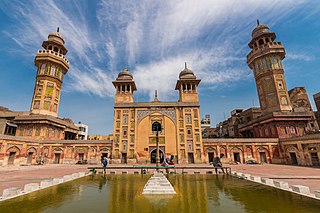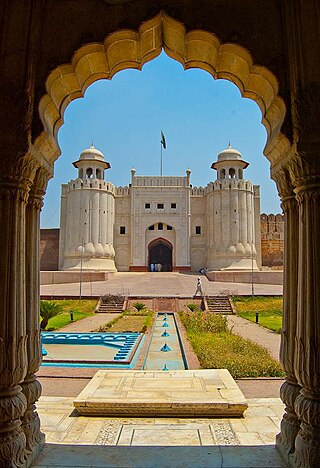Protected sites
Following is the list of sites protected by the Federal Government of Pakistan.
| ID | Name | Type | Location | District | Coordinates | Image |
|---|---|---|---|---|---|---|
| PB-20 | Shahi Masjid | Mosque | Chiniot | Lahore | 31°43′12″N72°58′37″E / 31.719968°N 72.976921°E |  |
| PB-40 | Akbari Sarai | Palace | Jehangir tomb complex, Shahdara Bagh | Lahore |  | |
| PB-41 | Tomb of Ali Mardan Khan and gateway | Shrine | On Mughalpura Road (locally Vetman Road), near Railway Workshop | Lahore | 31°20′33″N74°12′53″E / 31.3426°N 74.2147°E |  |
| PB-42 | Anguri Bagh | Garden | opposite Shalimar Gardens, Baghbanpura [2] | Lahore |  | |
| PB-43 | Tomb of Asif Khan | Shrine | Shahdara | Lahore |  | |
| PB-44 | Badshahi Mosque (King’s Mosque) | Mosque/Landmark | Walled City | Lahore |  | |
| PB-45 | Buddhu's Tomb (Buddhu Ka Awa) | Shrine | G.T. Road, Near University of Engineering & Technology [2] | Lahore |  | |
| PB-46 | Chauburji | Landmark | Mozang | Lahore |  | |
| PB-47 | Dai Anga Mosque | Mosque | in the Naulakha area, near the Sarvwala Maqbara and Lahore railway station | Lahore |  | |
| PB-48 | Bhati Gate | Gate | Walled City | Lahore |  | |
| PB-49 | Chitta Gate | Gate | Chowk Wazir Khan, inside Delhi Gate, Walled City | Lahore |  | |
| PB-50 | Delhi Gate | Gate | Walled City | Lahore |  | |
| PB-51 | Kashmiri Gate | Gate | Walled City | Lahore |  | |
| PB-52 | Lahori Gate | Gate | Walled City | Lahore |  | |
| PB-53 | Roshnai Gate | Gate | Walled City | Lahore |  | |
| PB-54 | Shairanwala Gate | Gate | Walled City | Lahore | 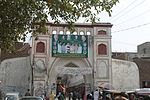 | |
| PB-55 | Taxali Gate | Gate | Walled City | Lahore |  | |
| PB-56 | Mochi Gate | Gate | Walled City | Lahore |  | |
| PB-57 | Masti Gate | Gate | Walled City | Lahore |  | |
| PB-58 | Gulabi Bagh Gateway and tomb | Gate | Begumpura [2] | Lahore | 31°34′41″N74°21′51″E / 31.578167°N 74.364095°E |  |
| PB-59 | Haveli of Nau Nihal Singh (now Victoria Girls High School) | Residential building (now school) | Kucha Nau Nihal Singh, inside Bhati Gate, Walled City [2] | Lahore | 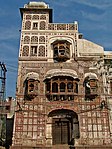 | |
| PB-60 | Hazuri Bagh | Garden | near the Lahore Fort and Badshahi Mosque, Walled City [2] | Lahore |  | |
| PB-61 | Hazuri Bagh Baradari | Landmark | near the Lahore Fort and Badshahi Mosque, Walled City [2] | Lahore | 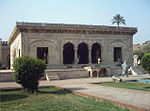 | |
| PB-62 | Hujra Mir Mehdi (Janazegah) | Kot Khawaja Saeed [2] | Lahore |  | ||
| PB-63 | Inayat Bagh | Garden | opposite Shalimar Gardens, Baghbanpura | Lahore |  | |
| PB-64 | Jahangir’s Tomb and compound | Shrine | Shahdara | Lahore |  | |
| PB-65 | Tomb of Jani Khan | Shrine | Baghbanpura | Lahore |  | |
| PB-66 | Javed Manzil | Residential building/Museum | Allama Iqbal Rd, Garhi Shahu, Mayo Gardens | Lahore | 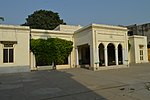 | |
| PB-67 | Lahore Fort complex (including Moti Masjid, Naulakha Pavilion, Sheesh Mahal and others) | Landmark | in Iqbal Park, Walled City | Lahore | 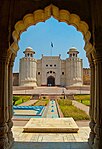 | |
| PB-68 | Mosque of Mariyam Zamani Begum | Mosque | inside Masti Gate, Walled City [2] | Lahore |  | |
| PB-69 | Baradari of Kamran Mirza | Landmark | Near River Ravi | Lahore |  | |
| PB-70 | Muhammad Iqbal’s Tomb | Shrine | In Hazuri Bagh, Walled City | Lahore | 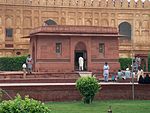 | |
| PB-71 | Muhammad Iqbal’s residence | Residential building/Museum | 34-A, McLeod Road | Lahore |  Upload Photo | |
| PB-72 | Tomb and Tank of Nadira Banu | Shrine | Mian Mir, Lahore Cantonment | Lahore |  | |
| PB-73 | Minar-e-Pakistan | Landmark | Lahore |  | ||
| PB-74 | Nawab Zakariya Khan’s Mosque | Mosque | Baghbanpura | Lahore |  | |
| PB-75 | One Kos Minar | Monument | Garhi Shahu [2] | Lahore | 31°33′52″N74°21′12″E / 31.564576°N 74.353301°E |  |
| PB-76 | Tomb of Qutb-ud-din Aibak | Shrine | Aibak Road, Anarkali | Lahore |  | |
| PB-77 | Well of Dina Nath | Monument | Chowk Wazir Khan, Walled City | Lahroe |  | |
| PB-78 | Samadhi of Bhai Wasti Ram | Shrine | Texali Gate near Lahore Fort, Walled City | Lahore |  Upload Photo | |
| PB-79 | Samadhi of Ranjit Singh | Shrine | Iqbal Park | Lahore |  | |
| PB-80 | Samadhi of Kharak Singh | Shrine | near Huzuri Bagh, Walled City | Lahore |  Upload Photo | |
| PB-81 | Samadhi of Nau Nihal Singh | Shrine | near Huzuri Bagh, Walled City | Lahore |  Upload Photo | |
| PB-82 | Samadhi and Baradari of Maharaja Sher Singh | Shrine | Lahore |  | ||
| PB-83 | Saru wala Maqbra (Cypress Tomb/Tomb of Sharf ul Nisa) | Shrine | Baghbanpura, near UET [2] | Lahore | 31°34′51″N74°21′51″E / 31.580853°N 74.364045°E | 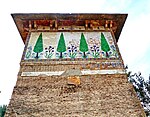 |
| PB-84 | Shalimar Gardens | Garden/Landmark | Baghbanpura | Lahore | 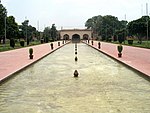 | |
| PB-85 | Tiled gateway and two bastions | Monument | Nawankot | Lahore |  | |
| PB-86 | Tomb of Anarkali | Shrine | Punjab Secretariat | Lahore |  | |
| PB-87 | Tomb of French officer's daughter Marie Charlotte | Shrine | Kuri Bagh | Lahore |  | |
| PB-88 | Tomb of Khawaja Sabir (Nawab Nusrat Khan) | Shrine | inside Railway Mechanical Workshop, Mughalpura | Lahore |  | |
| PB-89 | Shrine of Mahabat Khan and boundary wall | Shrine | Baghbanpura | Lahore |  | |
| PB-90 | Tomb of Nawab Bahadur Khan | Shrine | Mughalpura near Railway crossing; B-II, South of railway carriage shop | Lahore |  | |
| PB-91 | Tomb of Nur Jahan | Shrine | Shahdara | Lahore |  | |
| PB-92 | Tomb of Prince Parwaiz | Shrine | Kot Khawaja Saeed | Lahore |  | |
| PB-93 | Islamic Summit Minar | Landmark | Punjab Assembly, Mall Road | Lahore |  | |
| PB-94 | Lahore Museum | Museum/Landmark | The Mall | Lahore |  | |
| PB-95 | Tomb, House, and Mosque of Shaikh Musa Ahangar | Shrine | 35 Ghiraghan Street, McLeod Road | Lahore |  Upload Photo | |
| PB-96 | Tomb of Zeb-un-Nisa | Shrine | On Multan Road adjacent to Samanabad Morr, Nawan Kot | Lahore | 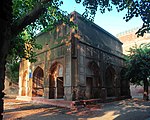 | |
| PB-97 | Two Kos Minars | Monument | Minola, 6 miles (9.7 km) from Jallo | Lahore |  | |
| PB-98 | Wazir Khan's Baradari | Monument | old Anarkali behind Lahore Museum | Lahore |  | |
| PB-99 | Shahi Hammam (Wazir Khan's hammam) | Monument | Chowk Wazir Khan, inside Delhi Gate | Lahore |  | |
| PB-100 | Wazir Khan Mosque | Mosque/Landmark | Chowk Wazir Khan, inside Delhi Gate | Lahore |  | |
| PB-101-A | Yakki Gate | Lahore |  | |||
| PB-102-A | Akbari Gate | Lahore |  | |||
| PB-103-A | Neevin Mosque | Lahore |  | |||
| PB-104-A | Cucoo's Den | Lahore |  | |||
| PB-105-A | Gali Surjan Singh | Lahore |  | |||
| PB-106-A | Noori Manzil | Lahore |  |
Special premises
| ID | Name | Type | Location | District | Coordinates | Image |
|---|---|---|---|---|---|---|
| PB-P-55 | Aitchison College | Educational institution | Mall Road | Lahore |  | |
| PB-P-56 | State Guest House | Government building | Mall Road | Lahore |  Upload Photo | |
| PB-P-57 | Lahore High Court Building | Educational institution | Shahra-e-Quaid-e-Azam | Lahore | 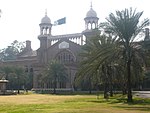 | |
| PB-P-58 | Punjab Assembly | Educational institution | Mall Road | Lahore |  | |
| PB-P-59 | Masonic Temple | Temple | 90 Mall Road | Lahore |  | |
| PB-P-60 | Ferozsons Building | Shahrah-e-Quaid-e-Azam | Lahore |  | ||
| PB-P-61 | Montgomery Hall (Quaid-e-Azam Library) | Museum | Bagh-e-Jinnah, Shahra-e-Quaid-e-Azam | Lahore | 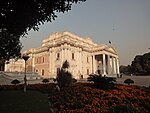 | |
| PB-P-62 | Chamba House (GOR Estate) | Government residential building | Lower Mall, Islampura | Lahore |  | |
| PB-P-63 | Civil Lines Police Station | Lahore |  Upload Photo | |||
| PB-P-64 | King Edward Medical University | Educational institution | Mayo Hospital Road, Anarkali | Lahore |  | |
| PB-P-65 | Neela Gumbad Anarkali | Neela Gumbad | Lahore |  | ||
| PB-P-66 | General Post Office | Mall Road | Lahore |  | ||
| PB-P-67 | State Bank of Pakistan Building | Government building | Mall Road | Lahore | 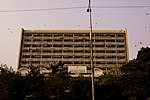 | |
| PB-P-68 | Taj Palace | Opp. Services Hospital, Jail Road | Lahore |  | ||
| PB-P-69 | Barkat Ali Hall | Circular Road | Lahore |  Upload Photo | ||
| PB-P-70 | Punjab University | Educational institution | Lahore |  | ||
| PB-P-71 | National College of Arts | Educational institution | Shahrah-e-Qauid-e-Azam, Mall Road | Lahore | 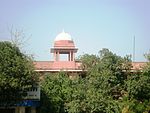 | |
| PB-P-72 | Lahore Town Hall | Government building | Shahrah-e-Qauid-e-Azam, Mall Road | Lahore |  | |
| PB-P-73 | Lakshmi Building | Mcleod Road/Nisbat Road | Lahore |  | ||
| PB-P-74 | Tomb of Malik Ayaz (Rang Mahal) | Shrine | Walled City | Lahore |  | |
| PB-P-75 | Fateh Garh Garden | Garden | near Shalamar Garden | Lahore |  | |
| PB-P-76 | Fakir Khana Museum | Museum | inside Bhati Gate, Hakiman Bazar | Lahore |  | |
| PB-P-77 | Haveli Dhyan Singh | Residential building/Monument | Texali Gate | Lahore |  | |
| PB-P-78 | Sheetla Mata Mandir | Temple | outside Shahalami Gate | Lahore |  | |
| PB-P-79 | Bradlaugh Hall | Rattigan Road | Lahore |  Upload Photo | ||
| PB-P-80 | Lahore Junction railway station | Railway station | G.T. Road/Circular Road | Lahore |  | |
| PB-P-81 | Government College | Educational institution | Mall Road | Lahore |  | |
| PB-P-82 | Islamia College | Educational institution | Sheikh Abdul Qadir Jillani Rd/Railway Road | Lahore |  | |
| PB-P-83 | University of Veterinary and Animal Sciences | Educational institution | Sheikh Abdul Qadir Jillani Road | Lahore |  | |
| PB-P-84 | Central Model High School | Educational institution | Lower Mall | Lahore |  | |
| PB-P-85 | Mubarak Haveli | Residential building | Bhati Gate | Lahore |  | |
| PB-P-86 | Haveli Nawab Sahib | Residential building | Mochi Gate | Lahore |  Upload Photo | |
| PB-P-87 | Lahore Gymkhana Club | Bagh-e-Jinnah, Upper Mall, Shahrah-e-Quaid-e-Azam | Lahore | 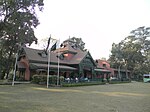 | ||
| PB-P-88 | Kinnaird College | Educational institution | Jail Road | Lahore |  | |
| PB-P-89 | Queen Marry College | Educational institution | Lahore |  | ||
| PB-P-90 | Governor's House | Government building | Mall Road | Lahore |  | |
| PB-P-91 | Haveli Sheikh Rukandin | Residential building | Lohari Gate | Lahore |  Upload Photo | |
| PB-P-92 | Gurudwara | Temple | D-Block, Model Town | Lahore | 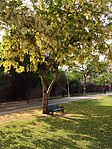 | |
| PB-P-93 | Chaubara of Chajju Bhagat | Anarkali Road near Mayo Hospital | Lahore |  | ||
| PB-P-94 | Dyal Singh Trust Library | Nisbat Road | Lahore |  | ||
| PB-P-95 | National Management College | Educational institution | Mall Road | Lahore |  Upload Photo | |
| PB-P-96 | Mian Shah Din Building | Sharah-e-Quaid-e-Azam | Lahore |  | ||
| PB-P-97 | Sunehri Masjid (The Golden Mosque) | Mosque | Kashmiri Bazaar | Lahore |  | |
| PB-P-98 | Shrine of Hazrat Abul Malali | Shrine | Lahore |  Upload Photo | ||
| PB-P-99 | Shrine of Hazrat Sakhi Shah Chan Charagh and attached mosque | Shrine | Lahore |  | ||
| PB-P-100 | Shrine of Hazrat Aishan Sahib | Shrine | Lahore |  | ||
| PB-P-101 | Shrine of Hazrat Syed Miran Mauj Darya Bukhari | Shrine | Lahore |  | ||
| PB-P-102 | Shrine of Mian Wada | Shrine | Lahore |  Upload Photo | ||
| PB-P-103 | Shrine of Hazrat Sikandar Shah | Shrine | Lahore |  Upload Photo | ||
| PB-P-104 | Mosque of Muhammad Saleh Kamboh | Mosque | Mochi Gate, Walled City | Lahore |  | |
| PB-P-105 | Data Durbar Complex | Shrine | Jilani Road | Lahore |  | |
| PB-P-106 | Shrine of Hazrat Khwaja Behari and nearby mosque | Shrine | Lahore |  Upload Photo | ||
| PB-P-107 | Shrine of Hazrat Maddho Lal Hussain | Shrine | Lahore | 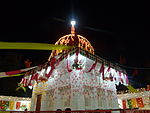 | ||
| PB-P-108 | Shrine of Hazrat Miran Hussain Janjani | Shrine | Lahore |  | ||
| PB-P-109 | Shrine of Hazrat Sabir Shah on the west of Badshahi Mosque | Shrine | Lahore |  | ||
| PB-P-110 | Shrine of Hazrat Pir Makki | Shrine | Lahore |  | ||
| PB-P-111 | Shrine of Bibi Pak Daman | Shrine | Lahore |  | ||
| PB-P-112 | Tomb of Shah Jamal | Shrine | Lahore |  | ||
| PB-P-113 | Shrine of Hazrat Shah Badakhshi | Shrine | Lahore |  Upload Photo | ||
| PB-P-114 | Small mosque of Wazir Khan inside Taxali Gate (the mosque of ladies of Wazir Khan) | Mosque | Lahore |  | ||
| PB-P-115 | Shrine of Nawab Abdul Samadd Khan | Shrine | Lahore |  Upload Photo | ||
| PB-P-116 | Masjid Mai Lado | Mosque | Lahore |  | ||
| PB-P-117 | Shrine of Hazrat Shah Kamal | Shrine | Lahore |  | ||
| PB-P-118 | Barkat Ali Islamia Hall | Lahore |  | |||
| PB-P-119 | Unchi Masjid | Mosque | Kucha Pir Shirazi | Lahore |  | |
| PB-P-120 | Jamia Masjid Patolian | Mosque | Mandi Chowk, inside Lahori Gate | Lahore |  | |
| PB-P-121 | Shrine and Mosque of Hazrat Syed Jan Muhammad Hazoori | Shrine | Lahore |  Upload Photo | ||
| PB-P-122 | Shrine of Hazrat Syed Maulvi Nizam-ud-Din | Shrine | Lahore |  Upload Photo | ||
| PB-P-123 | Shrine of Hazrat Sadar-ud-din Sadar Jahan | Shrine | Lahore |  Upload Photo | ||
| PB-P-124 | Mosque of Khawaja Ayaz | Mosque | Lahore |  | ||
| PB-P-125 | Shrine of Rustam Shah Ghazi | Shrine | Lahore |  Upload Photo | ||
| PB-P-126 | Chinian Wali Masjid | Mosque | Lahore | 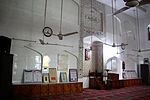 | ||
| PB-P-127 | Masjid Maulvi Taj Din | Mosque | Lahore |  Upload Photo | ||
| PB-P-128 | Shrine of Hazrat Shah Ismail Gilani | Shrine | Lahore |  Upload Photo | ||
| PB-P-129 | Shrine of Khawaja Muhammad Saeed within on enclosure opposite Nila Gumbad | Shrine | Lahore |  Upload Photo | ||
| PB-P-130 | Shrine of Shah Sharflying on the north of Khawaja Muhammad Saeed's Tomb | Shrine | Lahore |  Upload Photo | ||
| PB-P-131 | Shrine of Hazrat Shah Muhammad Ismail Gilani | Shrine | Lahore |  Upload Photo | ||
| PB-P-132 | Shrine of Hazrat Shah Shams-ud-Din | Shrine | Lahore |  | ||
| PB-P-133 | Shrine and Garden of Mian Khan s/o Gald Ullah Khan, the Prime Minister of Shahjahan | Shrine | Lahore |  Upload Photo | ||
| PB-P-134 | The Mughal Garden | Garden | Fatehgarh | Lahore |  | |
| PB-P-135 | The remaining entrance gate, mosque and baradari of the garden of Khawaja Ayaz, the former Governor of Lahore | Lahore |  Upload Photo | |||
| PB-P-136 | Shrine of Nawab Khan-i-Dauran Nusrat Jang Bahadur lying within the area of Railway Workshop | Shrine | Lahore |  Upload Photo | ||
| PB-P-137 | Shrine of Muhammad Saleh Kamboh | Shrine | St. Andrew's Church, Empress Road | Lahore |  | |
| PB-P-138 | Masjid Moran Tawaif (Masjid Moran Mai) | Mosque | Lahore |  | ||
| PB-P-139 | Shrine of Hazrat Imam Gamun | Shrine | Lahore |  Upload Photo | ||
| PB-P-140 | Shrine of Abdul Ghani between Shalamar Garden | Shrine | Lahore |  | ||
| PB-P-141 | Temple and tank of Bherron ka Than | Temple | Lehra | Lahore |  Upload Photo | |
| PB-P-142 | Sir Ganga Ram's Samadhi | Shrine | Ravi Road, Karim Park | Lahore |  | |
| PB-P-143 | Samadhi of Ghaju Bhagat | Shrine | Lahore |  Upload Photo | ||
| PB-P-144 | The enclosure and Grave of Mian Natha and his goat in the General Graveyard of Mian Mir | Shrine | Lahore |  | ||
| PB-P-145 | The Grave of Mulla Hamid Gujar | Shrine | Lahore |  Upload Photo | ||
| PB-P-146 | Shah Chiragh Chambers | Aiwan–e-Auqaf | Lahore |  | ||
| PB-P-147 | Hayat House No. 14 | Hall Road | Lahore | 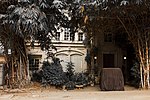 | ||
| PB-P-148 | Nila Gumbad Mosque | Mosque | Nila Gumband Road | Lahore |  | |
| PB-P-149 | Shrine of Hazrat Abdul Razzak Makki | Shrine | Nila Gumband Road | Lahore |  | |
| PB-P-149-A | Tomb of Khan-e-Jahan Bahadur Zafar Jang Kokaltash | Tomb | Lahore |  | ||
| PB-P-150-A | Smadhi Jhinger Shah Suthra | Lahore |  |

